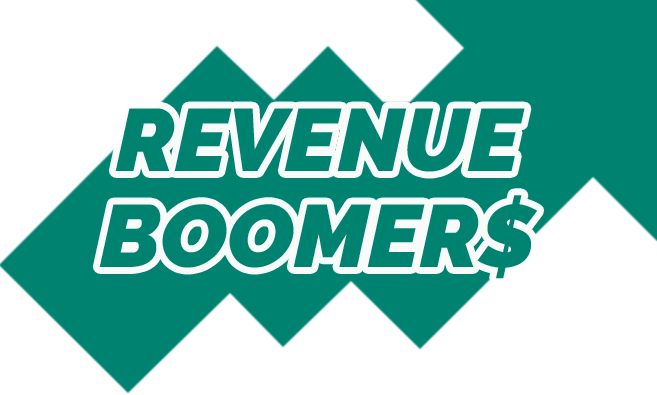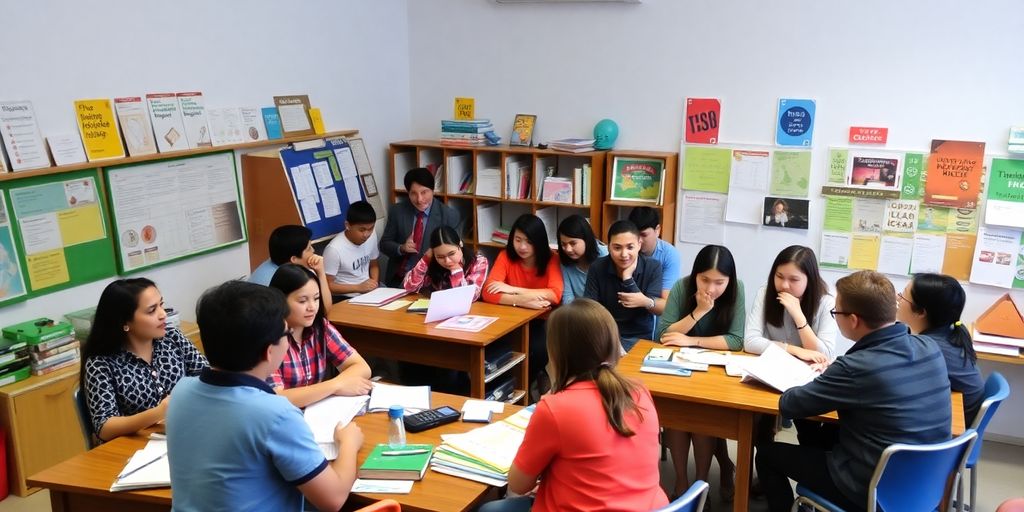When it comes to boosting your language school’s presence online, understanding SEO is key. SEO, or Search Engine Optimization, is all about making your website more visible in search engine results. The higher your site ranks, the more likely it is that potential students will find you when they’re searching for language courses. It’s not just about stuffing keywords everywhere; it’s a mix of on-page tweaks and off-page efforts. On-page SEO is all the stuff you can control on your website, like titles and content. Off-page SEO is about things like backlinks from other sites. This guide will walk you through the ins and outs of SEO for language schools, helping you attract more students and stand out in a crowded market.
Key Takeaways
- SEO is crucial for language schools to increase visibility and attract students online.
- Understanding both on-page and off-page SEO is essential for effective optimization.
- Multilingual SEO strategies are vital for reaching a global audience.
- Keyword research helps target the right audience with relevant search terms.
- Social media and visual content can enhance engagement and support SEO efforts.
Understanding SEO Fundamentals for Language Schools

Defining Search Engine Optimization
SEO, or Search Engine Optimization, is all about tweaking your website so it shows up more in search results. Think of it like making your site more appealing to search engines like Google. The main goal? To get more people to visit your site without paying for ads. You do this by making sure your site is easy for search engines to understand and that it seems useful to people searching for what you offer.
Importance of Visibility in SERPs
When someone searches for something on Google, they get a list of results on what’s called a Search Engine Results Page (SERP). If your language school isn’t on the first page, chances are, folks won’t find you. Being visible in these results is key because it means more eyes on your school and potentially more students signing up for classes. Visibility in SERPs can boost your school’s credibility and attract more students.
On-Page vs Off-Page SEO
SEO is split into two main parts: on-page and off-page. On-page SEO is about improving parts of your website you can control. This includes things like your page titles, headings, and the words on your pages. Off-page SEO, on the other hand, involves actions outside your site, like getting other websites to link back to yours. To make the most of SEO, you need a balance of both.
SEO isn’t just about getting traffic; it’s about getting the right traffic. When your SEO is on point, you attract people who are genuinely interested in what you have to offer, like students eager to learn a new language.
Unique SEO Challenges for Language Schools
Multilingual Audience Considerations
Language schools face the unique challenge of catering to a multilingual audience. Students often search in their native languages, requiring websites to be optimized for multiple languages. This isn’t just about translating content; it’s about making sure the site’s structure supports different languages. If not, search engines might not rank the pages well in various languages. Proper multilingual optimization is crucial to tap into this diverse audience effectively.
Competition in the Language Learning Market
The online language-learning market is bustling and competitive. Besides competing with other language schools, there’s a slew of apps and free resources vying for attention. This makes it tough to rank high on search engines, especially for popular terms like "learn English" or "Spanish courses." To stand out, schools need to use effective SEO strategies tailored to their unique offerings and audience.
Targeting International Students
Reaching international students adds another layer of complexity to SEO. It involves optimizing for global search terms and understanding cultural nuances that influence search behavior. Schools must focus on localized content to appeal to students from different regions. Without the right strategies, a school’s website might only reach a small portion of its potential audience.
SEO for language schools isn’t just about getting more eyes on your site. It’s about connecting with the right students who are looking for what you offer, in the language they understand.
Effective Keyword Research Techniques
Identifying Relevant Keywords
Identifying the right keywords is like finding the perfect ingredients for a recipe. You want to start by brainstorming terms that potential students might use when searching for language schools. Think about location-specific phrases like "Spanish classes in New York" or "French lessons near me." It’s also important to consider what makes your language school unique. Are there specific programs or methods you offer that others don’t? Highlight these in your keyword list.
Utilizing Long-Tail Keywords
Long-tail keywords are your secret weapon. These are longer, more specific keyword phrases that visitors are more likely to use when they’re closer to making a purchase or booking a class. For example, instead of just "learn English," you might use "intensive English courses in San Francisco." The traffic might be smaller, but these visitors are usually more qualified and ready to enroll.
Tools for Keyword Research
There are several tools out there to help you with keyword research. Here’s a quick list:
- Google Keyword Planner: Great for finding out which keywords are getting the most searches.
- SEMrush: Offers insights into which keywords your competitors are using.
- Moz Keyword Explorer: Helps you discover new keyword ideas and see how difficult it is to rank for them.
"Keyword research isn’t just about finding words; it’s about understanding your audience and what they’re looking for."
By using these effective SEO strategies for language schools, you can improve your website’s visibility and attract more potential students.
Leveraging Social Media for SEO
Engaging with Prospective Students
Social media is a goldmine for connecting with potential students. It’s not just about posting content but about starting conversations. Schools can use platforms like Facebook, Instagram, and LinkedIn to share updates, answer questions, and interact with students. Building a community online can significantly boost your school’s visibility. When students feel part of a community, they’re more likely to engage with your content and share it with their networks, increasing your reach.
Sharing High-Quality Content
Content is king, but quality content reigns supreme. Sharing engaging posts, informative articles, and eye-catching visuals can draw students to your school. Visual content, like videos and infographics, tends to perform exceptionally well on social media. It’s easily shareable and often more engaging than text alone. Consider regular features like "Student of the Month" or behind-the-scenes looks at language classes to keep the content fresh and exciting.
Promoting Events and Classes
Social media is an excellent platform for promoting upcoming events and language classes. Creating event pages on Facebook or posting stories on Instagram can create buzz and encourage sign-ups. Regularly updating your followers about new classes or special workshops can keep your school top-of-mind. A simple calendar of events shared monthly can also help students plan and participate in your offerings.
Social media isn’t just a tool for broadcasting; it’s a channel for engagement. By actively participating in conversations and responding to feedback, schools can create a dynamic online presence that resonates with both current and prospective students.
Utilizing Visual Content for Enhanced Engagement

Importance of High-Quality Images
In today’s digital world, the power of a striking image can’t be overstated. High-quality images grab attention and can even improve your website’s SEO when used effectively. Make sure each image is clear and relevant to your content. Don’t forget to include descriptive alt text and captions, as these elements boost accessibility and help search engines understand your images better. If you’re looking to further optimize, consider AI-driven image techniques that enhance effectiveness.
Incorporating Videos in Marketing
Videos are a fantastic way to engage potential students. They can showcase mini-lessons, tours of your campus, or even testimonials from happy students. Here’s why videos work so well:
- They provide a dynamic way to present information.
- Videos are more engaging than text alone, keeping users on your site longer.
- They can be shared easily on social media, expanding your reach.
Utilizing video content not only boosts engagement but also enhances your search engine presence.
Showcasing Student Experiences
Sharing real student experiences is a powerful tool. Prospective students want to see what life is like at your language school, and showcasing these stories can make your school more relatable and appealing. Consider the following approaches:
- Create video testimonials from current or past students.
- Share photo stories of student events and activities.
- Highlight achievements and success stories in a narrative form.
"Seeing a student’s journey can inspire others to start their own."
By focusing on visual content, you not only engage your audience but also improve your SEO strategy, making your school more visible to potential students.
Building a Strong Backlink Profile
Importance of Backlinks in SEO
Backlinks are like votes of confidence for your website. When other sites link to yours, it signals to search engines that your content is credible and worth checking out. This is especially important for language schools aiming to boost their online presence. A robust backlink profile can significantly enhance your search engine rankings. But remember, not all backlinks are created equal. Focus on getting links from reputable and relevant sources.
Strategies for Earning Quality Backlinks
Building a strong backlink profile takes time and effort. Here are some strategies that can help:
- Guest Blogging: Reach out to language learning blogs and offer to write guest posts. This not only earns you backlinks but also positions you as an expert in the field.
- Collaborate with Educational Websites: Partner with educational institutions or forums. They often welcome quality content and can provide valuable backlinks.
- Leverage Alumni and Student Networks: Encourage alumni and current students to share their experiences online and link back to your site.
It’s crucial to employ diverse link-building tactics and avoid any shady practices like link farms.
Monitoring Your Backlink Profile
Keeping tabs on your backlinks is essential. Use tools to monitor the status of your backlinks, ensuring they are active and relevant. If you notice any lost or broken links, take action to replace or repair them. A healthy backlink profile is key to maintaining your online reputation over time.
Regularly checking your backlinks can prevent your site from being associated with spammy or harmful sites, safeguarding your search engine rankings.
Conclusion
So, there you have it. SEO for language schools isn’t just a nice-to-have; it’s a must. Sure, it takes time and effort, but the payoff is worth it. By focusing on the right keywords, creating quality content, and making sure your site is easy to navigate, you can really boost your visibility online. And don’t forget about multilingual SEO—it’s crucial if you’re reaching out to students from different parts of the world. In the end, a well-optimized website can help you stand out in a crowded market and attract more students. Keep it simple, stay patient, and watch your efforts pay off.
Frequently Asked Questions
What does SEO mean for language schools?
SEO, or Search Engine Optimization, means making your language school’s website easy to find on search engines like Google. This helps more people discover your school when they search for language courses online.
Why is being visible in search results important?
Being visible in search results is important because it helps more students find your school. The higher your website appears in search results, the more likely people will click on it and learn about your programs.
What’s the difference between on-page and off-page SEO?
On-page SEO is about improving parts of your own website, like using the right words and making sure your pages load fast. Off-page SEO involves getting other websites to link to yours, which can help boost your site’s reputation.
How can language schools handle SEO for different languages?
Language schools can handle SEO for different languages by creating content in those languages and using the right keywords. It’s also important to structure the website so search engines know which languages are being used.
What are long-tail keywords and why are they useful?
Long-tail keywords are specific phrases that people might search for, like ‘Spanish classes for beginners in New York.’ They are useful because they often attract visitors who are looking for exactly what you offer.
How can social media help with SEO?
Social media can help with SEO by driving more visitors to your website. Sharing interesting content and engaging with students online can increase your visibility and attract more people to your language school.






